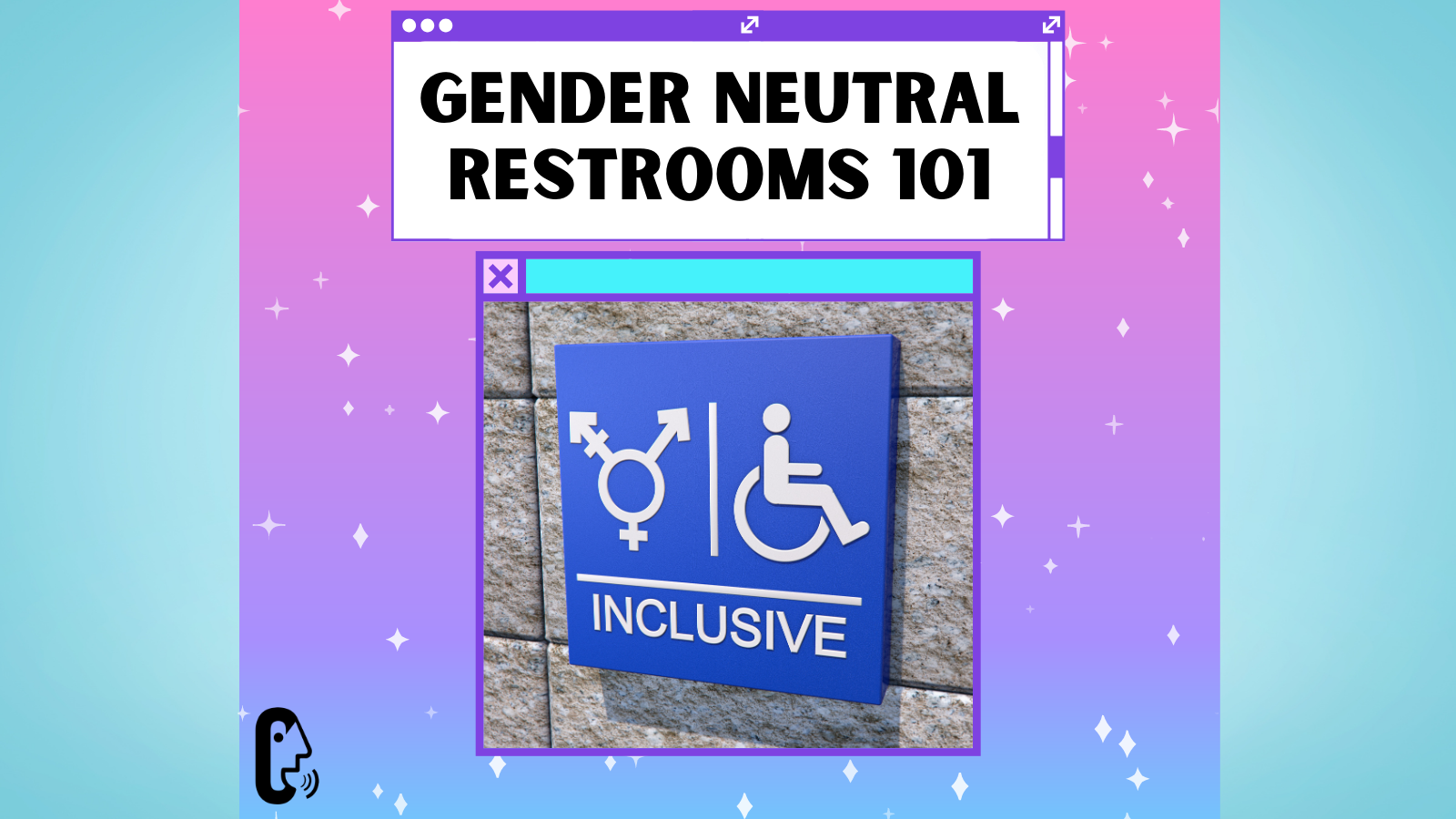“All people deserve dignity, acknowledgment, and space in public places. It shouldn’t be a ridiculous uphill fight.” – LeAnne McPherson
Imagine a society where everyone is placed into two neat little boxes. These boxes dictate everything a person can do, everything they are. From the big things of whom they can love, how they can act, what freedoms they are granted, how they can adequately interact with authority, expected futures, family life, and job salary; to the small things, personal style, what they’re expected to shave, how often they should smile, etc. That’s dystopian and apocalyptic, no? That’s us. That’s our society’s current view on gender. Now imagine the horror of not fitting neatly into that pink or blue little box. Imagine feeling like a freak, having every authority in one’s life insisting they’re just confused, that they don’t really want to leave the safety of the pink box? That they don’t really know what they want. Leaving the box is, in the authority minds, an unspeakable tragedy. Forget a yellow box, a purple one, a green one, anything and everything that breaks the perfect two-box system. This is the origin of Transphobia, that is how hate begins.
A basic understanding of transphobia is critical to understanding the argument in favor of Gender-Neutral Restrooms. A gender-neutral restroom is a restroom that a person of any sex or gender could use. Adding gender-neutral restrooms to public spaces is safe, beneficial, and kinder for everyone. Gender-neutral restrooms are beneficial (Styker). People mixing in restrooms leads to less social isolation and greater safety in numbers for marginalized people. Gender-neutral restrooms can be designed to be more accommodating. Having more toilets instead of urinals can help people who suffer from paruresis. [Pee-shyness.] Gender-neutral restrooms are kinder to Transgender, Nonbinary, and Intersex people (UN Office of the High Commissioner for Human Rights). Governments should help end discrimination towards trans people. As a marginalized group, trans people face remarkable danger and violence. Social changes can help make it safer for them.
The History of Public Restrooms
The public restroom journey starts back in Victorian times when modern public restrooms were created to house one of humanity’s most important inventions: the flush toilet. Before the flush toilet, men relieved themselves practically wherever and whenever he needed in public. In Paris, pissotières open-air urinals were everywhere. This public urination was founded upon behavior for women (Wu). When women started demanding restrooms for themselves, it caused a public outcry. This was undeniable proof that women were joining public life and leaving traditional ones. In Victorian times the concept that a woman was equal to a man and could join the workforce was radical. But Paris eventually had to give in to the demand. Viewing this struggle to be able to have a restroom in a modern light, the movement for gender-neutral restrooms feels the exact same. Transgender, nonbinary, and intersex people have always existed, but now they’re as largely visible in public as they’ve ever been. Demanding equality.
Note to Reader – Important definitions are provided to help understand different identities. Color coding will be used to help different terms. This section is all to help the readers be on the same page and to help the argument around the restrooms be better understood. Advanced knowledge of the gender spectrum isn’t common knowledge yet, it is always okay to ask for help in learning. Learning more about people who are different from ourselves is an important part of maturing. This is all to say, please be kind.
Separating Gender and Sex
Separating Gender and Sex may be a difficult concept for most people who have been taught to use them interchangeably. The basic rundown is that most people are born of two sexes, either with female anatomy or male anatomy. (Intersex people aren’t but for simplicity’s sake let’s stay with the two for now.) Traditional society treats both sexes differently depending upon which anatomy they were born with, with a preference for males. Different social roles, customs, and behaviors are taught to both sexes. And society expects everyone to follow these rules. These rules are the assigned concept of Gender. The intense battle of feminine vs masculine is all a social concept. No one must do/say/be anything just because of the body they have. This is a rather radical view of humanity, due to it changing the status quo of Western society. But societies with more than two genders aren’t new! Many Native American societies have both historically used and currently use the term Two Spirit to describe LGBTQ+ people, often including people presenting in a third gender (Oliver). Two Spirit pride flags are often a typical pride flag overlaid with two feathers. The Native Americans are far from the only culture to have historically accepted and labeled people who behave outside the gender norm. Below are some of the most common English terms for people who express themselves outside of the norm. [Not all labels as that could be an entire project on its own.] Within this paper, the term Trans/Trans Community will be used as a blanket shorthand for everyone in this vast group.
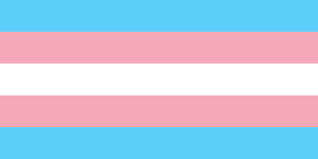
The Transgender Community Pride Flag: A transgender person is a person who identifies as the opposite sex they were born as. Elliot Page the actor is a transman. A person who isn’t trans is cisgender. Cisgender people are treated as the social default.
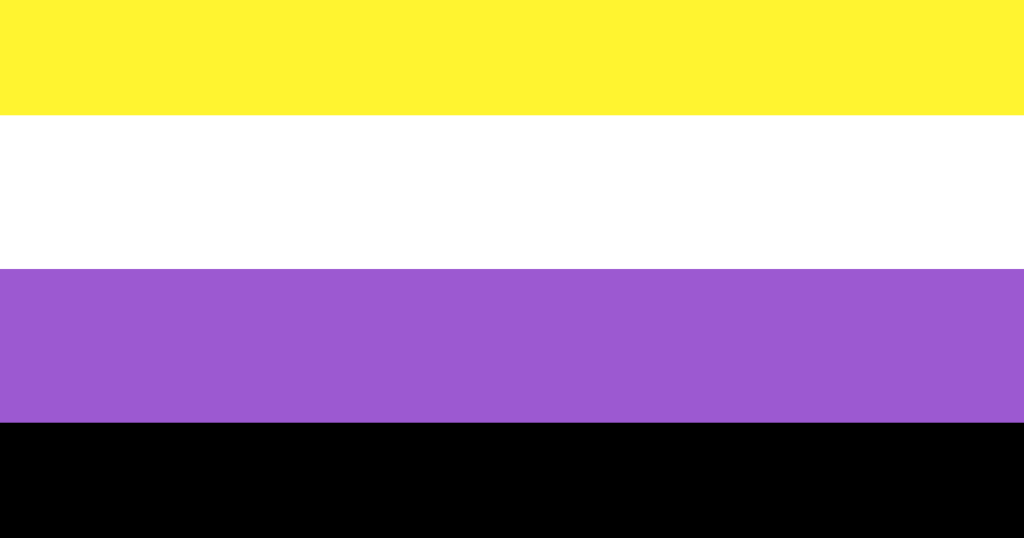
The Nonbinary Community Pride Flag: A nonbinary person is a person who identifies as not conventionally male/masculine, not conventionally female/feminine, but as a third, or fourth option. The third option is one outside of the conventional definition of the gender binary, male and female, not on that binary spectrum. That’s why they’re called non-binary. The fourth option identifies somewhere unique on the gender spectrum. Think of the semi-outdated term Androgynous to explain this ‘purple area’ of the gender spectrum. (The nonbinary identity itself is an umbrella identity, AKA an identity with many potential specific sub-labels. But for basic knowledge, think of it as containing the simple two versions above.) Demi Lovato, the singer, is nonbinary and uses She/They pronouns.
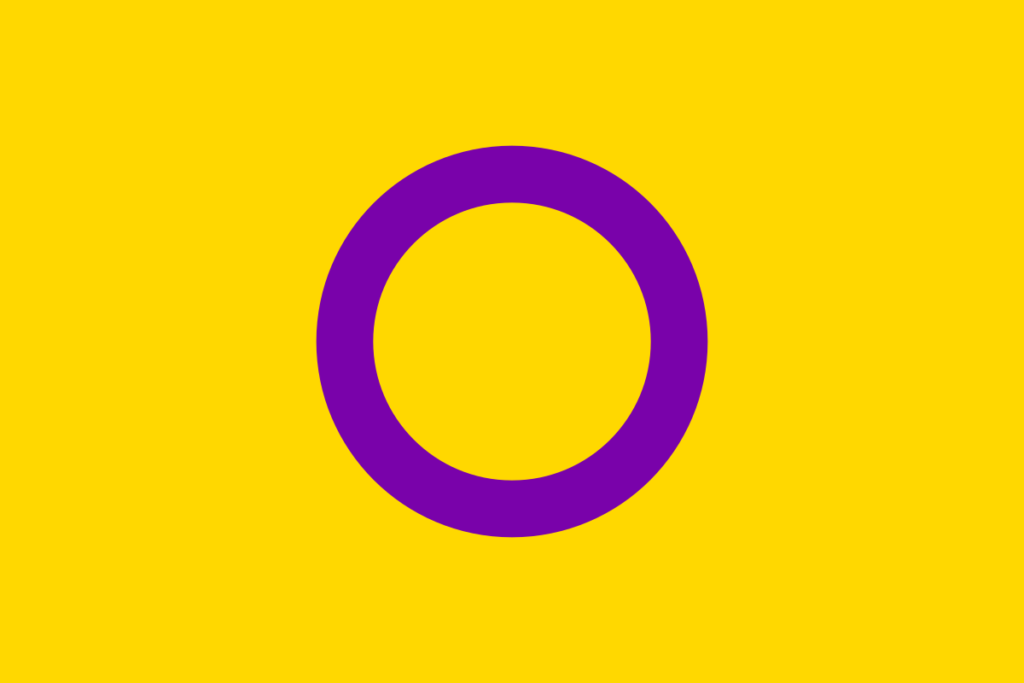
The Intersex Community Pride Flag: Intersex people are people who were born with genital and-or chromosomal differences. They were historically called hermaphrodites but many feel that this term is a modern slur due to negative associations. (MedlinePlus, “Intersex Definition”) Thanks to compassion and better medical knowledge, this term, and others stemming from it, have been phased out in most medical spaces and replaced with “Disorders of Sex Development [DSDs]”. River Gallo, an independent filmmaker, is intersex (Lipchik).
Apprehensions on Gender-Neutral Restrooms
All people deserve dignity, acknowledgment, and space in public places. Splitting restrooms based on sex feels like a relic of the past. Some people are apprehensive about changing a restroom from a “Woman’s Restroom” into a “Restroom”. The counterarguments and backlash are, as most backlashes are, rooted in fear. Negative stereotypes about trans people, specifically transwomen, dominate conservative talking points and Bathroom Bills. The entire ‘a cisman will put on a dress to assault ciswoman’ argument is a moot point when talking about gender-neutral restrooms because that’s not a transwoman in the hypothetical boogie man argument. That’s a cisman. One of many making this argument is Arkansas Governor Sarah Huckabee Sanders. “The governor has said she will sign laws that focus on protecting and educating our kids, not indoctrinating them and believes our schools are no place for the radical left’s woke agenda. Arkansas isn’t going to rewrite the rules of biology just to please a handful of far-left advocates.” Alexa Henning, a spokesperson for Sanders, told CNN. This absolutist way of thinking is slowly changing as more people meet and come to understand the Trans community. It’s an aging and ignorant argument.
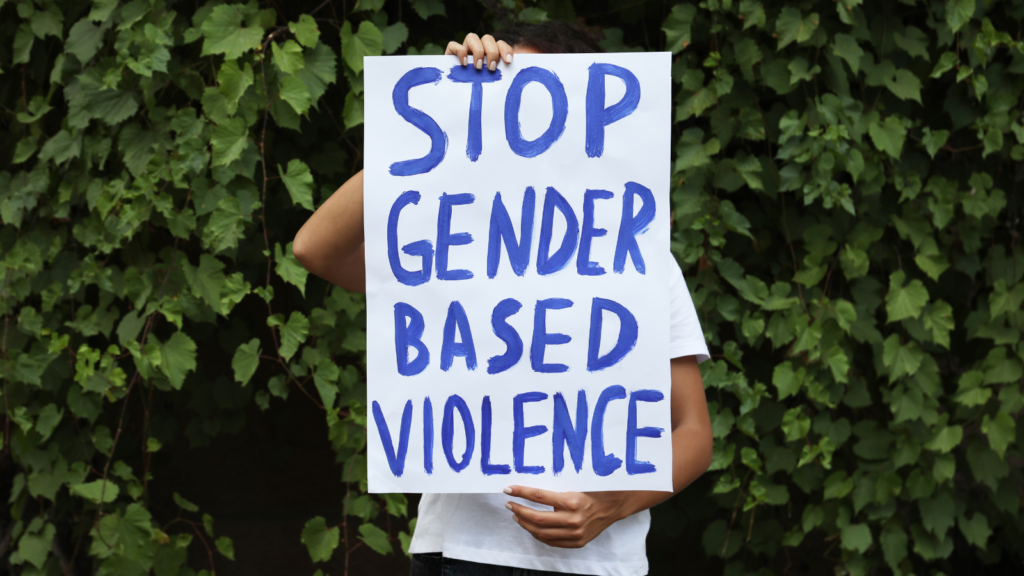
One in two transgender individuals is sexually abused or assaulted at some point in their lives (Kenagy). Since half of the trans population is likely to be sexual assault survivors themselves, a stereotype about them being the ones to perpetrate this type of crime is ridiculous and harmful. The risks to the life of a trans person are high; they are twice as likely to die quicker. Suicide is among the main reasons (Hart). The trans community faces constant harassment, fetishization, and public shame – this is why the phrase “Transphobia Kills” isn’t hyperbole. It’s why something as simple as having a restroom to use matters. When fighting just to be accepted is such a radical idea, life is hard. Life in a space that wishes to erase you, pretend you aren’t real, and force you to stop being yourself is hell. No wonder suicide rates in the community are so significantly higher than others. Public opinion is shifting, though. People are becoming more accepting of trans people, and small gestures of consideration – things like using preferred pronouns – are a great step in the right direction. It’s never too late to become an ally, a person who supports LGBTQ+ people. There are great resources for learning more about allyship, The Human Rights Campaign, and the Trevor Project are some of the best. Knowledge is power, and researching more is surprisingly easy!
While talking about the harm of transphobia it is important to also acknowledge trans joy. Life as a trans person is complex, and it’s important to highlight the highs as well as the lows. According to Communications Strategist, Gillian Branstetter, “The suffering of transgender people is a policy choice disguised as an inevitability. This is why our joy is so indispensable as a fuel for action.” People don’t come out of the closet just to constantly suffer, and viewing the trans experience in such a simple light is dangerous. People are publicly trans because it’s empowering to be one’s true self despite the social stigma. There’s freedom in that. There’s bravery in that. Gender-affirming healthcare exists because there’s a demand for it. Now, of course, not everyone in the trans community wants medical operations, and they aren’t any less trans because of that. The modern shift from treating transitioning as a medical disorder to a choice is a very important one that the medical community is still catching up to.
The polarizing nature of modern politics is often used to separate and demonize trans people because their existence is terrifying to people who refuse to understand them. Right-wing politicians spew hate changing the trans community from “fellow humans, family, and friends” and framing them to be a scary threat out to get their base (Sosin). Not only is that type of bias sad, outdated, and frustrating – it can be deadly. To understand this let’s focus on the LGBTQ+ community as a whole. [Both the LGB+ ‘sexuality side’ and the T+ ‘gender side’ of the community.] Legislation against LGBTQ+ people in America is at an all-time high: the ACLU is currently tracking over 426 anti-LGBTQ+ bills. These bills and laws affect every aspect of life, seeking to maintain cis-hetero-normativity. Cis Heteronormativity is another ‘social default’ it means a society that is built around cisgender (not trans) heterosexual (straight) people. A cisheteronormativie society actively oppresses LGBTQ+ people due to fear, ignorance, and hate. Fear of the status quo changing, ignorance of people who are different, and hate of the unknown.
What is a Bathroom Bill?
With over 200 being in current legislation, it’s important to know: a bathroom bill is a bill that seeks to force trans people into using the bathroom that corresponds with their assigned birth gender. One of the reasons this is so dangerous is that a lot of trans people no longer look like the gender they were born as. This can cause cis people to interrogate them. Asking for everything from an ID to more invasive forms of proof. [Asking a transman to show his binding bra strap, for example.] Not only can this be demeaning, but particularly dangerous in the opposite situation, a transwoman in the men’s room. With no little stretch of the imagination, one could easily see how ‘proving’ oneself in the ‘correct’ restroom, especially post-transitional surgery, could be incredibly precarious for a transwoman. Of course, no one should be interrogating someone in the bathroom, to begin with, but these laws reinforce this as a correct and needed social response. Which it most definitely is not. The great irony in all of this is that in these situations’ others are invading the privacy of trans people while claiming it’s to protect their own. Bigots occasionally assume cis women who look masculine are trans women. This, in extreme situations, can lead to situations like this. “The video showed a confrontation between TikTok user Jay (creatingjayrose) and an unknown woman, who accused her of being trans, and demanded she reveal her gender identity”, according to writer Chantelle Billson. Going to the restroom shouldn’t be a reason to get screamed at or cornered into a stall in terror. Bigots are so bold in such a ridiculous way, bothering people for simply existing. Everyone needs to feel safe in the restroom. Historically, America has dealt with bathroom segregation, prior to the Civil Rights movement restrooms, water fountains, and any similar public tool could be deemed “White Only”. We now recognize this behavior as racist and awful: and restrooms are no longer able to be segregated by race. The arguments against race-neutral restrooms were based on fear and not logic (Thompson). The arguments against gender-neutral restrooms are based on fear and not logic. Why repeat the sins of the past? Bathroom Bills are a piece of the massive puzzle that is oppression. It needs to stop.
Nearly everyone alive has experienced a gender-neutral restroom, think of the main bathroom in a home or a single-room restroom in a business. It shouldn’t be a ridiculous uphill fight. Especially when gender-neutral restrooms greatly benefit society. It makes it easier for parents of small children who may need to accompany them, especially fathers whose traditional restrooms might not have changing tables. It gives remodelers greater options beyond just ADA compliance for accessibility and a chance to improve, accommodating everyone better. It’s safer for trans people who wouldn’t have to fear integration each time they go to a restroom. Adding gender-neutral restrooms to public spaces is safe, beneficial, and kinder for everyone. Gender-neutral restrooms are the least a cisheteronormative society can do to protect trans people.
Originally Written For: English Composition II
Leanne McPherson
Creative Director

